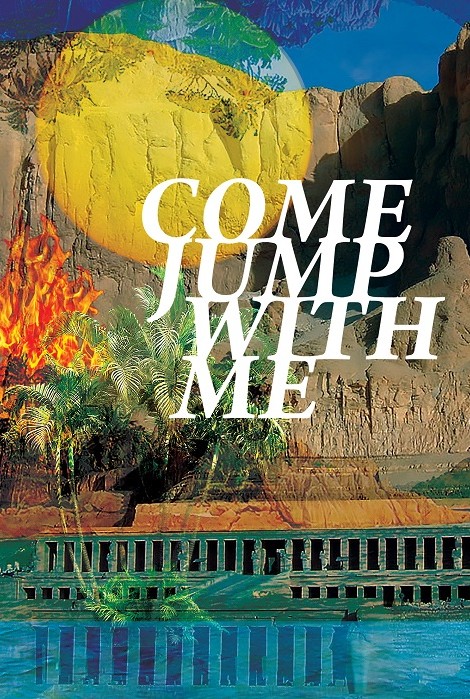Between Dark Humor and Suffocation
27/11/2015
The New Piece by Yossi Berg and Oded Graf is a Blow to the Gut with its Piercing Critique of Violence and Vulgarity in Israel of 2015
“Excuse me, is this the Holy Land?” asks the dancer and choreographer Yossi Berg at the opening of Come Jump with Me, the new piece that he created with Oded Graf, his partner both in life and in dance. The question, which at first sounds as if asked by an innocent tourist who lost their way in Jerusalem, repeats itself (together with additional questions) throughout the performance. The multiple repetitions, each time in a different context and with different intonation, turns the query into the key question of the performance. Starting out as a simple geographic clarification, the question develops into one that is deep, critical and actual – critical to the extent that it seems as if the choreographers believe that their effort is a lost cause, one that is doomed to despair and failure.
Ostensibly, the narrative presented to the audience is a tragedy. But “good” tragedies are not judged by their structure, but rather by how they lead the viewers, and by the messages successfully conveyed. With Berg and Graf, these messages are tough and painful. It seems that the name of the piece – if this writer’s “spoiler” analysis is correct — reflects Berg and Graf’s conclusion that when looking at the present state of affairs, the only thing left to do is to jump – either helplessly and without hope, as in the Hebrew pejorative “Kfotz Li!”, or simply to jump off, as into an abyss.
The performance is actually a duet featuring Berg and the dancer Olivia Court Mesa. He, a native-born Israeli, is presented as someone who finds himself here almost against his will and is looking for ways to escape. She, a native of Germany, came to Israel to dance, fell in love with the country, with the Jewish religion and with Israeli men. After the first set of questions the dancers begin a long and coordinated session of jumping rope while she continues to ask questions. Sometimes the questions, which are not relevant and sound like clichés or Facebook statuses gone viral, are spewed out to the audience obsessively.
The texts are accompanied by scenery which also deals with clichés – a territory marked by borders on the stage, at first in white and then in color as they designate the location of the sea and the sky; a soldier’s hat; lollipops; chairs that become a fortress and more. In this sense Come Jump with Me is a figurative composition, at times to the point of rupture. The audience is required to constantly analyze and examine, and while this effort is not difficult intellectually, it is unyielding. Perhaps this is the objective of the choreographers, who sought to showcase a dead-end reality that is relentlessly infuriating and exasperating to those who simply want to live their lives here in peace and quiet. Indeed, it seems as if the choreographers no longer see the citizens of the state as a naïve group of people who find themselves in a difficult situation, but rather as full accomplices in creating the tragedy.
Within this social critique, which contains moments of Meta Dance (for example, Berg’s act as a soldier is taken from a previous work), the least tight of the performance is actually the movement itself. In Berg and Graf’s previous works (especially Black Fairy Tale), i.e. dance also serves to emphasize messages communicated by dialogue, scenery and music. Here movement itself has been minimalized, both in terms of its expressiveness and its execution. However, with a performance that transports the audience from a sensation of black humor to one of suffocation (embodied contemptuously by Court Mesa dancing with a countless number of lollipops stuck in her mouth), perhaps Berg and Graf felt that even dance can no longer serve as an escape.
– Tal Levin, Achbar Ha’ir
